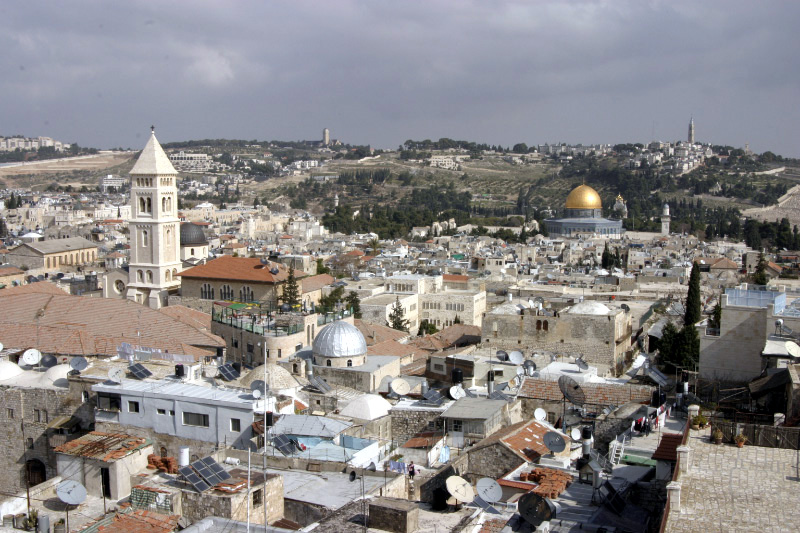6 Aug. David defeats Israel’s neighbours
“Later, David defeated the Philistines, conquered them, and took the city of Metheg Ammah. He also defeated the people of Moab. He made them lie on the ground, and then he used a rope to measure them. Those who were measured within two rope lengths were killed, but those who were within the next rope length were allowed to live. So the people of Moab became servants of David and gave him the payment he demanded.”
“David also defeated Hadadezer son of Rehob, king of Zobah, as he went to take control again at the Euphrates River. David captured 1,000 chariots, 7,000 men who rode in chariots, and 20,000 foot soldiers. He crippled all but 100 of the chariot horses.”
“Arameans from Damascus came to help Hadadezer king of Zobah, but David killed 22,000 of them. Then David put groups of soldiers in Damascus in Aram. The Arameans became David’s servants and gave him the payment he demanded. The LORD gave David victory everywhere he went.”
“David took the shields of gold that had belonged to Hadadezer’s officers and brought them to Jerusalem. David also took many things made of bronze from Tebah and Berothai, which had been cities under Hadadezer’s control.”
“Toi king of Hamath heard that David had defeated all the army of Hadadezer. So Toi sent his son Joram to greet and congratulate King David for defeating Hadadezer… Joram brought things made of silver, gold and bronze. King David gave them to the LORD, along with the silver and gold he had taken from the other nations he had defeated. These nations were Edom, Moab, Ammon, Philistia and Amalek. David also gave the LORD what he had taken from Hadadezer son of Rehob, king of Zobah.”
“David was famous after he returned from defeating 18,000 Arameans in the Valley of Salt. He put groups of soldiers all over Edom, and all the Edomites became his servants. The LORD gave David victory everywhere he went.”
(2 Samuel 8:1-14)

King David is often looked upon as the most successful military conqueror in the history of the Israelite nation. By the end of his reign in c.971 BC, the boundaries of Israel (and the neighbouring vassal kingdoms who paid tribute to David) stretched across the Fertile Crescent from the Wadi of Egypt to the River Euphrates.
The success of David’s military campaigns, however, was due not only to his own charismatic and capable leadership, but also reflected the weakness of his neighbours at that point in history. David came to power as king of the southern territory of Judah in c.1011 BC (see 2 Samuel 2:1-4), at a time when the Philistines, Israel’s traditional enemy, were in decline. The previous year, Saul’s son Jonathan had toppled the standing stone (the ‘netsib’) at Geba that stood there to proclaim Philistine supremacy over the area (see 1 Samuel 13:3). This was followed by the rout of the Philistine forces at the Battle of Michmash Pass (see 1 Samuel 14:1-23).
David had served as a mercenary soldier for the Philistine king of Gath (see 1 Samuel 27:2-4), so when King Saul was mortally wounded by the Philistines at the Battle of Gilboa (see 1 Samuel 31:1-6), the Philistines were happy to support David’s claim to the throne of Judah and establish him there as a vassal king. In the event, it took seven years of fighting for David (who had been anointed King of Judah) to defeat Saul’s son Ish-Bosheth and establish the United Monarchy of Israel and Judah in c.1004 BC (see 2 Samuel 2:8-11, 3:1-39 & 4:1-12).
Having become king over all the tribes of Israel, David quickly consolidated his position by capturing the Canaanite city of Jebus (Jerusalem) from the Jebusites and establishing his new capital there in the City of David (see 2 Samuel 5:6-10). Having agreed an alliance with the Phoenician king of Tyre (see 2 Samuel 5:11), David was able to turn against his former patrons, the Philistines, and defeat them in the Valley of Rephaim (see 2 Samuel 5:17-2).
Over the next few years, David succeeded in completely subjugating the Philistines and taking control of the southern coastal plain cities of Gaza, Gath, Ashkelon, Ashdod and Ekron (see 2 Samuel 8:1). Several of the Amarna letters, written on clay tablets by the Philistine King of Ashkelon to the King of Egypt (and now preserved at the British Museum in London) record the pleas of the Philistines for assistance from the Egyptian pharaoh to defeat their ‘Habiru’ (Hebrew) neighbours.
In just under thirty years, David succeeded in transforming a small kingdom in the central highlands of Judaea into a major empire stretching from the border of Egypt to the lowlands of Mesopotamia.
The photo (by Shmuel Spiegelman) shows the Old City of Jerusalem.
You can read more about David’s victories @ https://www.thebiblejourney.org/biblejourney2/30-israel-becomes-a-kingdom-under-saul-and-david/davids-victories-over-israels-neighbours/
